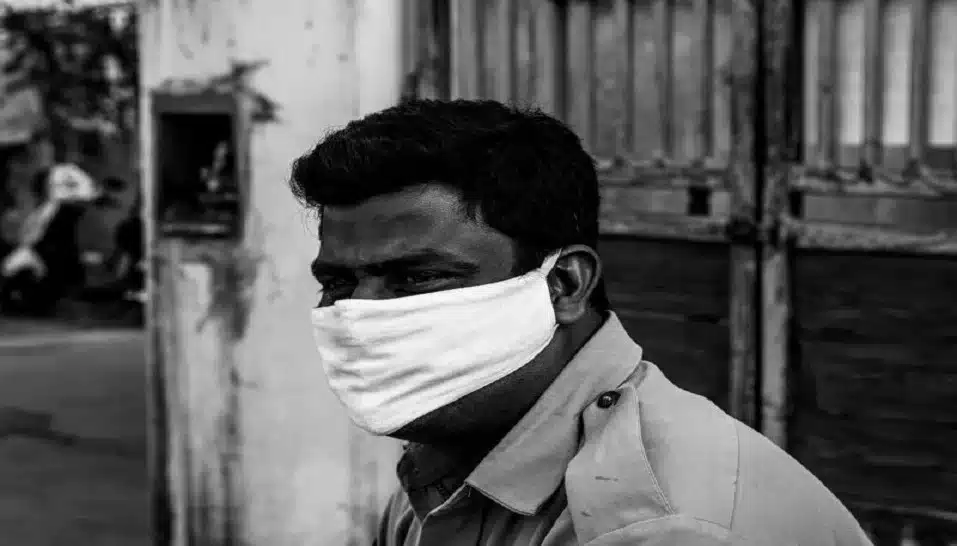India is reporting a progressively high increase in the number of COVID-19 recoveries and a persistent decline in the percentage of active cases, since mid-September. As a result, the five states most affected by coronavirus — Maharashtra, Tamil Nadu, Karnataka, Andhra Pradesh, and Uttar Pradesh all show a steady increase in doubling rates of over 150 days.
As schools and colleges reopen across several states in India, the general tone is one of optimism. Since January 2020, when the first case of COVID-19 was reported in Kerala, the country has been through four months of a national lockdown followed by a gradual resumption of public activity.
With vaccine development still underway and the logistical arrangements for vaccine delivery a seemingly herculean task, state governments are finding themselves in a position to make critical policy decisions with existing data on COVID-19 cases, fatalities, and recoveries.
Current status of COVID-19 infections in India
There is a steady decline in the number of new infections being reported by the Ministry of Health and Family Welfare since mid-September. The number of daily cases has declined from 97,000+ cases in September to 40,000+ cases in October, although serosurveys point to a large prevalence of asymptomatic cases and under testing which remains a cause for concern.
Globally, India ranks second to the United States of America, which is reporting 70,000+ new cases per day.
Another metric that has received a lot of positive coverage is India’s recovery rate which currently stands at 90.99%, according to the Ministry of Health and Family Welfare’s COVID-19 dashboard. This rate, which is calculated by dividing the total number of “recoveries” by the total number of cases and is being used to project tremendous progress, has long been seen as problematic by epidemiologists.
Primarily, the recovery rate will increase with time even without government action, as recovery is bound to happen over time. Moreover, in the absence of negative testing, there is no concrete measurement of recovery.
The Case Fatality Rate is another indicator of progress, as it measures the total number of deaths by the total number of cases. India’s Case Fatality Rate is currently at 1.50%, half of the global average. Fatality Rates also depend on the accurate reporting of deaths.
Doubling rate for infectious diseases
In the case of infectious diseases that follow an exponential model, epidemiologists often use ‘doubling rates’ to measure the growth of infections.
Doubling rates tell us how many days it takes to double the number of infections. Although there are variations in methodologies used to calculate doubling rates, the numbers produced tend to be broadly similar.
It was on 15 October, when the Ministry of Health and Family Welfare tweeted about the sharp increase in India’s doubling time.
#IndiaFightsCorona#Unite2FightCorona
India’s Doubling Time has sharply increased to 70.4 days (it was 25.5 days in mid August).
This indicates a substantial fall in the daily New Cases and the consequent increase in time taken to double the Total Cases. pic.twitter.com/6lckGUW1AY
— Ministry of Health (@MoHFW_INDIA) October 15, 2020
At Health Analytics Asia, we conducted a similar analysis of doubling rates using 7-day rolling averages to control for daily spikes in cases. In addition to analysing the national doubling rate, we also look at the doubling rate of six Indian states that have reported a large number of COVID-19 infections.
Increase in India’s doubling rate
As the number of new cases are on a steady decline across states and union territories, the doubling rate is also bound to increase.
A high doubling rate is a sign of progress, as it indicates that the rate of infection growth is on a decline, therefore, slowing the rate at which the number of cases doubles.
The number of COVID-19 infections in India were doubling on average every 4 days in March and every 7 days in April. Between May and July, it increased to 20 days. The sharpest increase, however, was observed between September and October when the doubling rate increased by 38% to reach a 7-day period-doubling rate of 75.3 days as of 28 October. It was around the same time that the number of daily new cases began decreasing after hitting a peak in mid-September.
Doubling Rate in states most-affected by COVID-19
With the exception of Delhi, the other five states most affected by COVID-19 – Maharashtra, Tamil Nadu, Karnataka, Andhra Pradesh, and Uttar Pradesh all show a steady increase in doubling rates.
While Maharashtra currently reports a doubling rate of 178 days and Andhra Pradesh and Tamil Nadu report doubling rates of 169 days and 174 days, respectively, the state of Uttar Pradesh reports a doubling rate of 152 days.
After reaching a peak of over 100 days in August, Delhi’s doubling rate has drastically reduced to 62 days on 28 October. This corresponds to the recent spikes in new cases that have been reported in the national capital.
Doubling rates are arguably better at aiding in policy decisions as they indicate the spread of infections on a continual basis and effectively capture sudden spikes in cases, enabling governments to enforce temporary restrictions when the numbers surge.
However, like any other indicator, doubling rates are highly dependent on the reporting of cases, which is ultimately a function of testing.

















